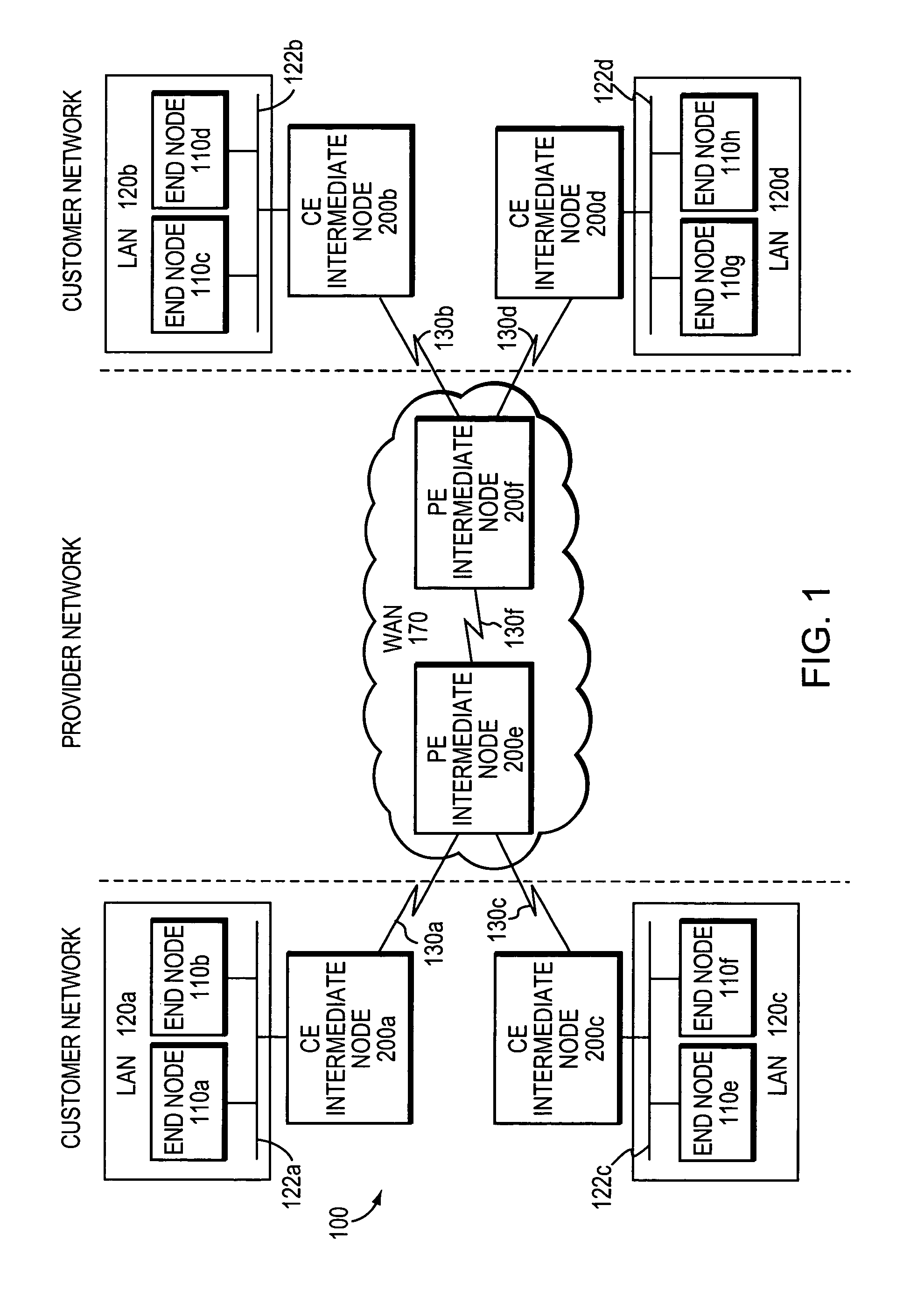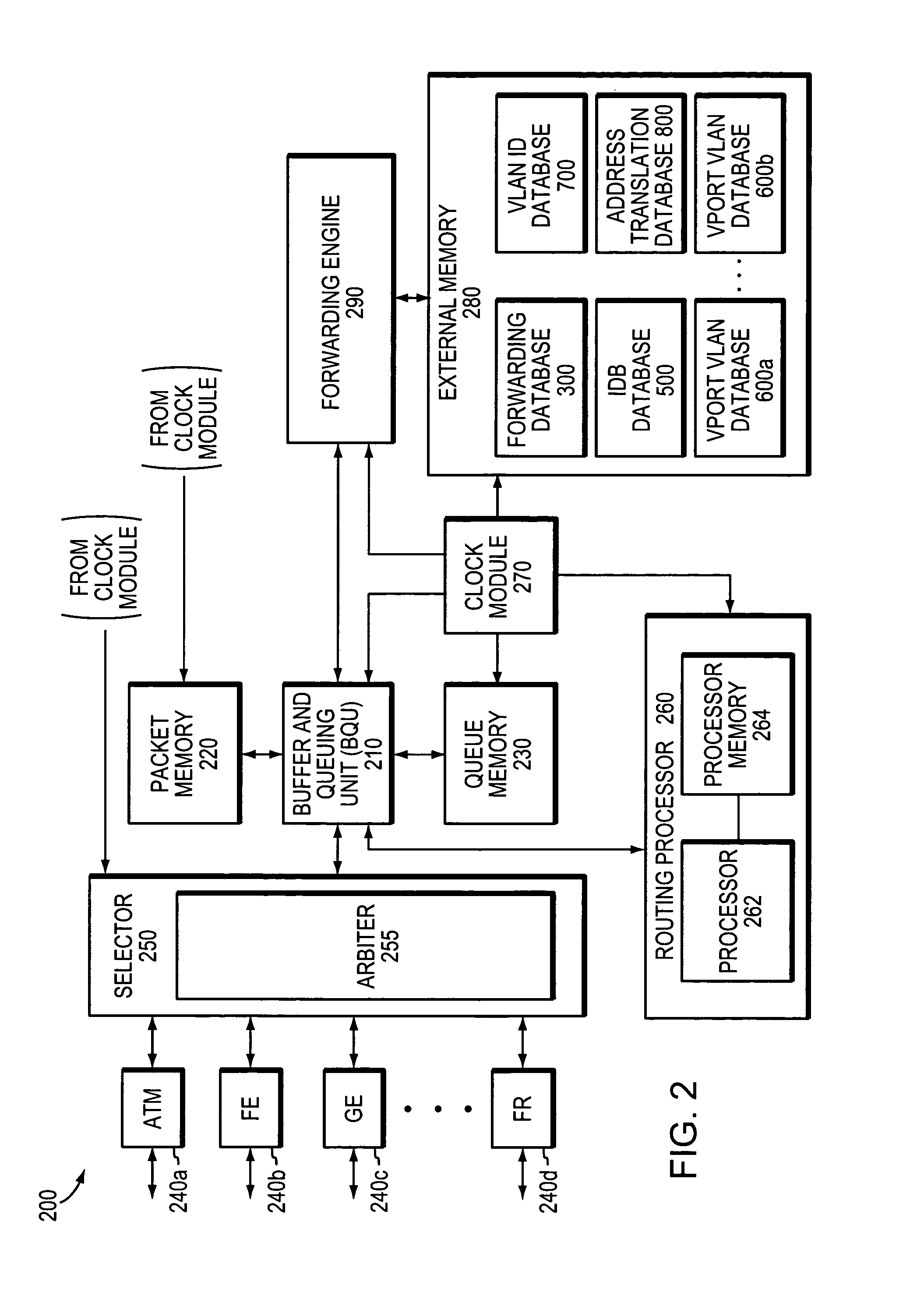Technique for coupling entities via virtual ports
a technology of virtual ports and entities, applied in the field of data networking, can solve the problems of blocking traffic on the other vlans, stp may not work properly, vcs may not appear transparent to various l2 protocols operated over the vlan, etc., and achieve the effect of consuming additional resources and conserving resources
- Summary
- Abstract
- Description
- Claims
- Application Information
AI Technical Summary
Benefits of technology
Problems solved by technology
Method used
Image
Examples
Embodiment Construction
[0028]FIG. 1 is a schematic block diagram of an exemplary data network 100 that may be advantageously used with the present invention. The network 100 comprises a collection of communication links and segments connected to a plurality of nodes, such as end nodes 110 and intermediate nodes 200. The network links and segments may comprise local area networks (LANs) 120, LAN links 122, a wide-area network (WAN) 170, and WAN links 130 interconnected by intermediate nodes 200 to form an internetwork of computer nodes. These internetworked nodes communicate by exchanging data according to a predefined set of protocols, such as the Transmission Control Protocol / Internet Protocol (TCP / IP) and the Institute of Electrical and Electronics Engineers (IEEE) 802.3 and 802.1Q protocols.
[0029]Illustratively, data network 100 comprises a customer network portion belonging to a customer and a provider network portion belonging to a service provider (SP). The customer network portion comprises various...
PUM
 Login to View More
Login to View More Abstract
Description
Claims
Application Information
 Login to View More
Login to View More - Generate Ideas
- Intellectual Property
- Life Sciences
- Materials
- Tech Scout
- Unparalleled Data Quality
- Higher Quality Content
- 60% Fewer Hallucinations
Browse by: Latest US Patents, China's latest patents, Technical Efficacy Thesaurus, Application Domain, Technology Topic, Popular Technical Reports.
© 2025 PatSnap. All rights reserved.Legal|Privacy policy|Modern Slavery Act Transparency Statement|Sitemap|About US| Contact US: help@patsnap.com



